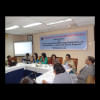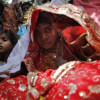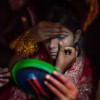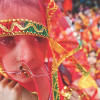The cost of marrying off girls too soon

In Bangladesh, one in every two girls gets married before reaching the age of 18. This particular figure has been cited in a recently released UN report. Specifically, 51 percent of Bangladeshi girls are married before they turn 18. Any girl under 18 is a minor and a child. Therefore, this figure, in reality, refers to child marriage. Globally, Bangladesh ranks eighth in terms of child marriages and tops the list among South Asian countries. In this regard, other South Asian countries are doing much better—with child marriage rates at 10 percent in Sri Lanka, 18 percent in Pakistan, and 23 percent in India.
Child marriage is closely linked to high adolescent pregnancy rates. Girls under 18 have little control over their reproductive health and limited autonomy in making reproductive decisions. In Bangladesh, 53 percent of adolescent girls lack control over their reproductive health. One in every four married girls under 18 becomes pregnant. Last year, 28 percent of adolescent girls between the ages of 15 and 19 experienced physical or sexual violence by their partners.
The drawbacks of child marriage are widely recognised. First, adolescent girls are not physically ready to bear children. As a result, early marriage and subsequent pregnancy pose significant health risks, including chronic illness and shortened life expectancy. Furthermore, the mother's ill health can be transmitted to her child, and an adolescent mother often lacks the maturity to raise a child properly.
Second, early marriage often disrupts education. Many talented girls, eager to continue their studies, are forced to leave school after marriage. In Bangladesh, the number of female school dropouts is double that of boys. Education opens the door to countless opportunities, and early marriage may close that door permanently. Moreover, educated mothers tend to contribute positively to their children's health, nutrition, and education. Girls married early, with their educational prospects cut short, are unable to play this role effectively.
Third, girls who marry young often hesitate to assert their rights, voice, or autonomy, and are excluded from household decision-making. Due to their age, their opinions are rarely taken seriously in economic matters within the family. In many cases, they also lack full control over decisions regarding their own reproductive health.
The fundamental question is: if the dangers of early marriage are well known and if there are laws against it, why does it persist in Bangladesh?
First, the answer lies in the structure of a patriarchal society where many aspects of women's lives are governed by the decisions and ideas of men. Early marriage is one such reality. In various social spheres, if men consider adolescence to be the ideal time for girls to marry, this belief becomes a social norm for women.
Second, poverty plays a major role. According to a 2023 World Bank survey, the likelihood of marrying before the age of 18 is three times higher among girls from the poorest quintile of households compared to those from the richest. Poverty, economic uncertainty, and vulnerability often push poorer families to marry off their daughters. It has also been observed that the districts in Bangladesh with the highest poverty rates are the same areas with the highest rates of adolescent marriage. When families cannot afford to educate their daughters or see no viable way out of the poverty cycle, marriage becomes a perceived solution—a way to relieve the family of the financial burden.
Third, deteriorating law and order, widespread lawlessness, political uncertainty, and violence contribute to insecurity for women and girls. Families often believe that marrying their daughters early will protect them. The perception is that married girls are safer in their husband's homes. In many cases, the state has failed to ensure safety for women. The increasing incidences of rape, abuse, and violence against women are clear indicators of this failure in Bangladesh.
Fourth, crises such as conflict, natural disasters, epidemics, and pandemics tend to accelerate early marriages. During these times, families often resort to marrying off daughters to alleviate economic stress. For instance, during the Covid pandemic, school closures made educational futures uncertain and removed the protective environment schools often provide. In such situations, early marriage was seen as a solution by many.
Finally, the issue of dowry plays a significant role. It is often argued that as girls grow older, they become less desirable, and dowry demands increase. Younger girls, by contrast, are associated with lower dowry costs. Thus, families may choose early marriage to avoid higher dowry expenses.
Given all this, the question becomes: what can be done to end early marriages in Bangladesh?
It must be acknowledged that some measures will be legal, others social or cultural, and some will relate to socio-economic policy. A comprehensive strategy addressing all these areas must be developed and pursued.
Social rules and cultural norms are shaped by entrenched ideas—for instance, that girls are a burden or that educating them is pointless since they will eventually marry and leave home. In many rural areas, early marriage is linked with family honour and social reputation. When girls elope with men of their choice, it is treated as a source of shame for the family. These beliefs must change. So too must the patriarchal mindset that consistently values sons over daughters. Society must understand that marriage is not the solution to every challenge in a woman's life.
However, social attitudes cannot be changed overnight. Work must be done at the grassroots level through awareness campaigns using print, broadcast, and social media. Religious leaders have an important role to play. So do local politicians, artists, cultural figures, and sports and media personalities. Tools such as short films, street plays, puppet shows, exhibitions, and videos can be used to influence public attitudes effectively.
On the legal side, the current framework must be strengthened. Loopholes need to be closed, and implementation must be rigorous. The 2017 Child Marriage Restraint Act was widely criticised for allowing child marriage under "special circumstances." This provision has been widely exploited. The law must be revised. In many cases, child marriages were prevented by the intervention of Upazila Nirbahi Officers (UNOs) with police support. In some instances, a child marriage was stopped because the would-be bride called a government hotline.
Expanding girls' education can be a powerful tool in curbing early marriage. Educated women are more likely to delay marriage, have fewer children, and enjoy better health. Education also leads to empowerment. Educated women, particularly those with technical or vocational skills, and employment opportunities, can shift public perceptions and social norms.
In many cases, men are not involved in the movement against child marriage. That must change. Men should be engaged and participate in this struggle—there is no alternative. As long as men continue to shape the realities of women's lives, they must also be part of the solution.
Child marriage erases capabilities, destroys potential, and ends dreams. It is a major obstacle to human rights, personal development, and national progress. Its complete elimination is not only desirable, it is essential.
Selim Jahan is former director of the Human Development Report Office under the United Nations Development Programme (UNDP) and lead author of the Human Development Report.
Views expressed in this article are the author's own.
Follow The Daily Star Opinion on Facebook for the latest opinions, commentaries, and analyses by experts and professionals. To contribute your article or letter to The Daily Star Opinion, see our guidelines for submission.

 For all latest news, follow The Daily Star's Google News channel.
For all latest news, follow The Daily Star's Google News channel. 










Comments